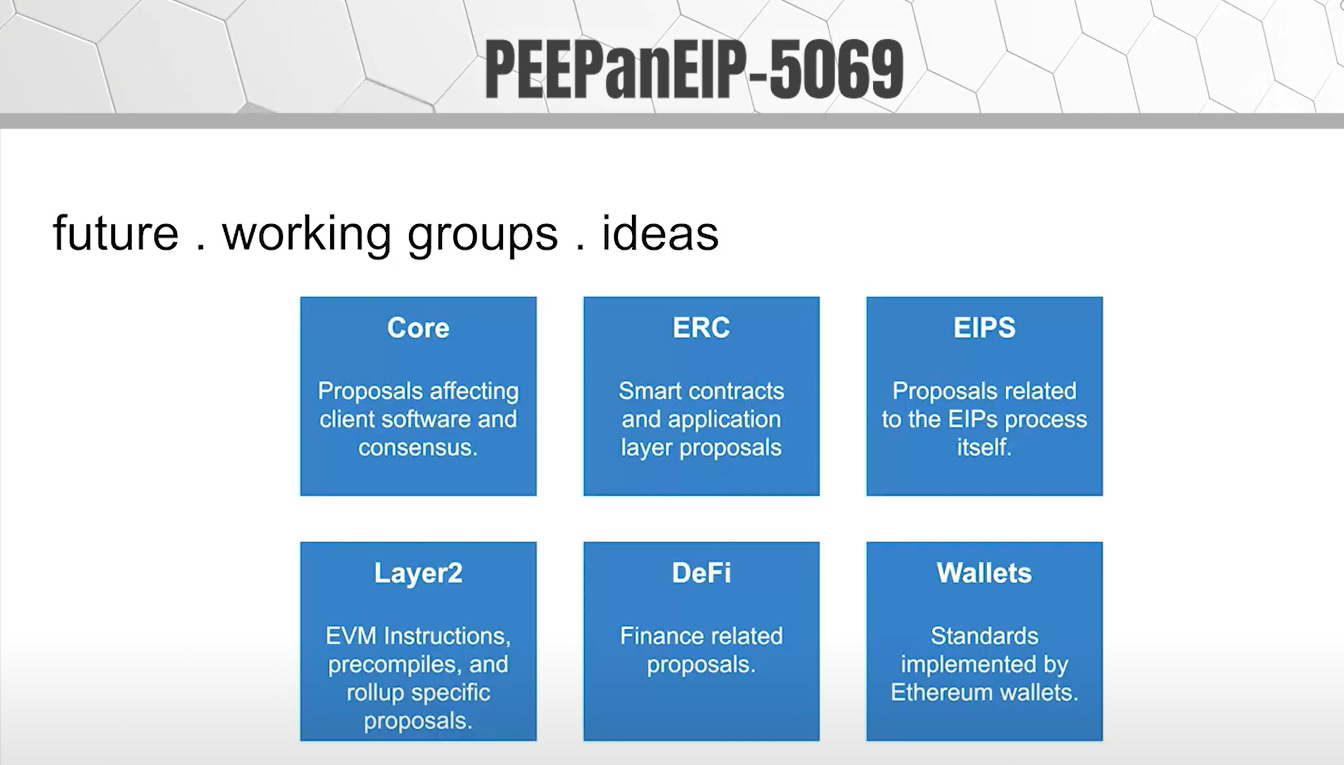EIP Fun Weekly #24: EIP Editor Handbook
This week, we introduce a special EIP called the "EIP Editor Handbook", plus updates on key EIP meetings, new ideas, and more!
Hello everyone! Welcome to read the 24th issue of EIP Fun Weekly. Let's take a look at what happened in the EIP community this week.
EIP Updates
First, let's review some of the key meetings this week and the formal changes to EIPs.
EIP Editing Office Hour Meeting #28
EIP Status Change
Here are the EIPs that have been approved for a status change:
Status: Undefined → Draft
Abstract: The objective of this proposal is to enhance the efficiency of Casper FFG clients by reducing the average number of pairings required to verify consensus rules. While this EIP can benefit all types of clients, it is expected to have the most significant impact on ZK circuits that prove Casper FFG consensus.
Status: Draft → Review
Abstract: The beacon chain block roots, functioning as cryptographic accumulators, enable the generation of proofs for any consensus state. By exposing these roots within the EVM, it enables trust-minimized access to the consensus layer. This functionality has broad applications, improving trust assumptions for staking pools, restaking constructions, smart contract bridges, MEV mitigations, and more.
Status: Draft → Review
Abstract: This EIP presents two new EVM instructions: AUTH and AUTHCALL. The AUTH instruction sets a context variable, "authorized," based on an ECDSA signature. The AUTHCALL instruction is used to make a call as the authorized account. Essentially, this enables the delegation of control over an externally owned account (EOA) to a smart contract.
Status: Draft → Review
Abstract: The main purpose of this feature would be to allow contracts to retrieve the value of the blob base-fee, enabling them to programmatically handle the gas price for blob data. This functionality enables rollup contracts to securely account for the costs associated with blob data usage. Additionally, it opens up possibilities for implementing blob gas futures, allowing users to manage and distribute data blob costs more efficiently over time.
EIP of the Week
Then let's take a look together at the applications or developments related to EIPs this week.
New ERC-7555: Single Sign-on for Account Discovery
This proposal, authored by @greg,aims to establish a standardized interface and functionality for applications to efficiently discover user accounts other than the typical externally owned accounts (EOA). It specifically focuses on discovering both normal accounts and smart accounts that may have been deployed or configured using signing keys other than the standard Ethereum secp256k1 curve. The ultimate goal is to ensure consistency in retrieving addresses across different applications and domains.
Why propose it?
Recent advancements in account abstraction have brought about increased flexibility, allowing for various use cases such as multi-signature transactions, social recovery, contract and account whitelisting, and session keys.
However, this flexibility also brings forth greater complexity, particularly in the form of account fragmentation at both the externally owned account (EOA) and smart account levels. This occurs due to the challenge of accurately identifying all existing addresses associated with a user. In this EIP, we propose a potential solution that aims to streamline the discovery and management of such accounts.
Further Reading
FEM forum discussion: https://ethereum-magicians.org/t/eip-6601-evm-modular-arithmetic-extensions-evmmax/13168
EIP-4788: Beacon block root in the EVM
This EIP, authored by Alex Stokes, Ansgar Dietrichs, Danny Ryan, Martin Holst Swende, and lightclient, proposes committing to the hash tree root of each beacon chain block in the execution payload header. The suggestion is to store each of these roots in a smart contract.
Why propose it?
The cryptographic accumulators representing the roots of the beacon chain blocks enable the generation of proofs for any consensus state. By incorporating these roots within the EVM, it provides a trust-minimized means to access the consensus layer. This functionality facilitates numerous use cases, such as enhancing trust assumptions for staking pools, restaking constructions, smart contract bridges, MEV mitigations, and more.
Further Reading
FEM forum discussion: https://ethereum-magicians.org/t/eip-6909-multi-token-standard/13891
Anecdote of the Week
The current process for EIPs is primarily managed by a group of EIP editors. Today, we would like to introduce a special EIP called the "EIP Editor Handbook," which aims to shed light on how this dedicated group of individuals manages the thousands of EIPs and their work process.
Mission
Our mission is to serve the Ethereum community, present and future, by:
Publishing Proposals: Making proposals, their history, and associated discussions available free of charge for the long term. This fosters transparency and enables access to valuable insights from past proposals for future decision-making and learning.
Facilitating Discussion: Providing an inclusive forum for civil participation in proposal discussions, allowing anyone to contribute. Through open dialogue and collaboration, we aim to leverage the collective knowledge and expertise of the Ethereum community in shaping proposals.
Upholding Quality: Ensuring each proposal meets a minimally-subjective quality standard defined by its target audience. By adhering to specific criteria, we promote the development of high-quality and relevant proposals to drive the evolution of Ethereum.
Memberships
To become an EIP Editor, interested individuals can apply. While specific eligibility requirements are determined by current EIP Editors, the general expectations include having a strong belief in the mission, proficiency in English (both written and spoken), the ability to read and provide feedback on EIPs, and active participation in governance. EIP Editors are expected to fulfill these requirements throughout their tenure, and failure to do so may result in removal. Additionally, EIP Editors have the flexibility to delegate some or all of their responsibilities and powers to tools or other individuals.
Future
In the future, it would be promising to have working groups that focus on specific goals. Here are some potential ideas for such working groups:
Want to know more about it? Check out:
1.PEEPanEIP #124: EIP-5069: EIP Editor Handbook with Sam Wilson
EIP Events
Ethereum Cat Herders Meeting #122
Date & Time - December 5, 2023, at 15:00 UTC
For details about the meeting, you can visit this GitHub issue.
AllCoreDevs Execution Layer Meeting #176
Date & Time - December 7, 2023, at 14:00 UTC
For details about the meeting, you can visit this GitHub issue.
Tokenbound Weekly Dev Call (ERC-6551)
Date & Time - December 7, 2023, at 15:00 UTC
For meeting message and more detail, you may join the official dev working group here.
That's all for this week from EIP Fun. EIP Fun is created and supported by LXDAO and PlanckerDAO. We aim to serve as the “layer 2” of the EIP ecosystem, simplifying and accelerating the adoption of EIPs.
Please inform us if you have any additional suggestions or feedback. EIP Fun is a fully open-source and community-driven public good! Donate to us here.
Join the Telegram of EIP Fun: https://t.me/eipfun for more discussions and build connections with EIP buidlers. Follow our Twitter: @EIPFun.





